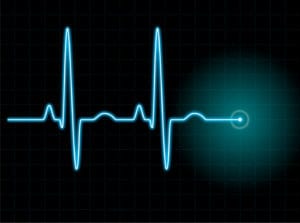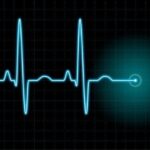
A new study out of Duke University aims to use biometric data gathered from smart wearables and smartphones to try and spot early symptoms of the COVID-19 virus that has swept across the globe in recent weeks.
The study — called CovIdentify — will look at the biometric and health data gathered by smart watches, fitness trackers, and smartphones to determine whether it can tell researchers more about early indications that the user may have COVID-19.
Data such as sleep schedules, blood-oxygen levels, heart rate and activity levels are already tracked and gathered by wearable devices like FitBits and Apple Watches, worn by millions of Americans, and researchers are hoping this data can be used to track and identify early symptoms of COVID-19.
Heading the research team for CovIdentify are assistant professor of biomedical engineering Jessilyn Dunn and Ryan Shaw, an associate professor of nursing and the director of the university’s Health Innovation Lab.
Dunn and her team — including collaborators Geoff Ginsburg, the director of MEDx (Medicinie + Engineering at DUke) and Chris Woods, the associate director of the Duke Center for Applied Genomics and Precision Medicine — are building on previous research into whether the data collected from wearable devices could spot whether the wearer was susceptible to other health issues like diabetes or cardiovascular diseases. Last month the team decided to focus its attention on COVID-19.
“The idea for CovIdentify came to us in early March when we realized that there was going to be an explosion of COVID-19 cases across the United States, and we knew this was going to be a long-term health care problem,” said Dunn. “The team quickly put together a plan to investigate how the data from mobile devices and smartwatches could provide signals of early COVID-19 infection, and if we could predict the severity of infection,” she added.
Prior to working with Dunn’s team, Woods an Ginsburg were conducting several investigations into the early detection of infectious disease using wearable data, with funding from the Defense Advanced Research Project Agency (DARPA).
CovIdentify officially launched its first phase at the beginning of April, with participants able to take part in daily surveys including their demographic and medical information on the covidentify.org website. The survey asks about the people participants have come into contact with and whether they feel sick, with a ‘yes’ response leading to more questions about their symptoms.
Participants will fill out the survey — which is delivered via email or text — once a day for 30 days, followed by once a week for two more months, while also being asked to share relavent health data from their smartphones and wearables.
“The survey was designed to be simple to complete, as we want to encourage consistent participation,” said Dunn. “We ask about common symptoms including nasal congestion, runny nose, cough, sore throat, headache, fever and chills, and COVID-specific symptoms, like shortness of breath, nausea and loss of sense of taste and smell.”
According to Dunn, the variety of the symptom-related questions asked is designed to determine which ones are caused by seasonal issues like allergies or colds, and which could be due to COVID-19.
Currently, the Fitbit is the only device that can be directly connected to the study, though this is expected to change by the end of April when Dunn and her team launch their planned CovIdentify app for iPhones, which will be able to pull data from any wearable device that syncs with the Apple Health app. Shortly after that the team plan to launch similar programs for Android users.
Though using a device will provide the research team with more biometric data, participants don’t need to have a wearable device to take part in the study, and any data gathered will be protected and kept anonymous.
“Our goal is to get 12 months of historical data from these apps and six months of data going forward,” said Shaw. “This will help us create a baseline so we can see what a person’s health usually looks like,” he added.
Shaw said that the data they collect will allow researchers to create a trajectory of the illness, hopefully drawing a line between changes in digital health data and the emergence of any COVID-19 specific symptoms.
“We want to see the differences in people who do and don’t get sick, and we also want to see what data would indicate a mild illness and what indicates the progression to a severe illness,” he said.
Source: Pratt School of Engineering
–
April 9, 2020 – by Tony Bitzionis




Follow Us